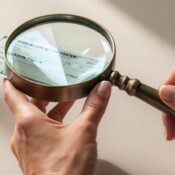IRS Tax Tip 2017-51: Important Facts about Filing Late and Paying Penalties
 By Joe Nagel, Esq., LL.M., CPA
By Joe Nagel, Esq., LL.M., CPA
The IRS recently issued the attached Tax Tip for Late Filing Penalties. If you have late filing or other penalties, we may be able to help. For more information please contact us at 404-255-7400 or info@hoffmanesatelaw.com.
April 18 was this year’s deadline for most people to file their federal tax return and pay any tax they owe. If taxpayers are due a refund, there is no penalty if they file a late tax return. Taxpayers who owe tax, and failed to file and pay on time, will most likely owe interest and penalties on the tax they pay late. To keep interest and penalties to a minimum, taxpayers should file their tax return and pay any tax owed as soon as possible.
Here are some facts that taxpayers should know:
1. Two penalties may apply. One penalty is for filing late and one is for paying late. They can add up fast. Interest accrues on top of penalties.
2. Penalty for late filing. If taxpayers file their 2016 tax return more than 60 days after the due date or extended due date, the minimum penalty is $205 or, if they owe less than $205, 100 percent of the unpaid tax. Otherwise, the penalty can be as much as 5 percent of their unpaid taxes each month up to a maximum of 25 percent.
3. Penalty for late payment. The penalty is generally 0.5 percent of taxpayers’ unpaid taxes per month. It can build up to as much as 25 percent of their unpaid taxes.
4. Combined penalty per month. If both the late filing and late payment penalties apply, the maximum amount charged for the two penalties is 5 percent per month.
5. Taxpayers should file even if they can’t pay. Filing and paying as soon as possible will keep interest and penalties to a minimum. IRS e-file and Free File programs are available for returns filed after the deadline. If a taxpayer can’t pay in full, getting a loan or paying by debit or credit card may be less expensive than owing the IRS.
6. Payment options. Taxpayers should explore their payment options at IRS.gov/payments . For individuals, IRS Direct Pay is a fast and free way to pay directly from a checking or savings account. The IRS will work with taxpayers to help them resolve their tax debt. Most people can set up a payment plan using the Online Payment Agreement tool on IRS.gov.
7. Late payment penalty may not apply. If taxpayers requested an extension of time to file their income tax return by the tax due date and paid at least 90 percent of the taxes they owe, they may not face a failure-to-pay penalty. However, they must pay the remaining balance by the extended due date. Taxpayers will owe interest on any taxes they pay after the April 18 due date.
8. No penalty if reasonable cause. Taxpayers will not have to pay a failure-to-file or failure-to-pay penalty if they can show reasonable cause for not filing or paying on time. Taxpayers should keep a copy of their tax return. Beginning in 2017, taxpayers using a software product for the first time may need their Adjusted Gross Income (AGI) amount from their prior-year tax return to verify their identity. Taxpayers can learn more about how to verify their identity and electronically sign tax returns at Validating Your Electronically Filed Tax Return .
Author
-

Joe joined Hoffman & Associates in 2000 and became a partner in 2007. He is licensed to practice law in Georgia, Florida, North Carolina, and Ohio and is also a Certified Public Accountant. Joe serves clients in the areas of estate planning, corporate law, employment law, mergers and acquisitions, succession planning, income and estate tax planning, and tax controversy.
View all posts
Recent Posts
How Urgent is 2025 Exemption Gifting?
Paying Your Taxes Safely: Leveraging IRS Direct Pay to Mitigate Fraud Risks
Did you Contribute to a Syndicated Conservation Easement?
All Categories
Get a Free Consultation
Call us today to discuss your issue.



